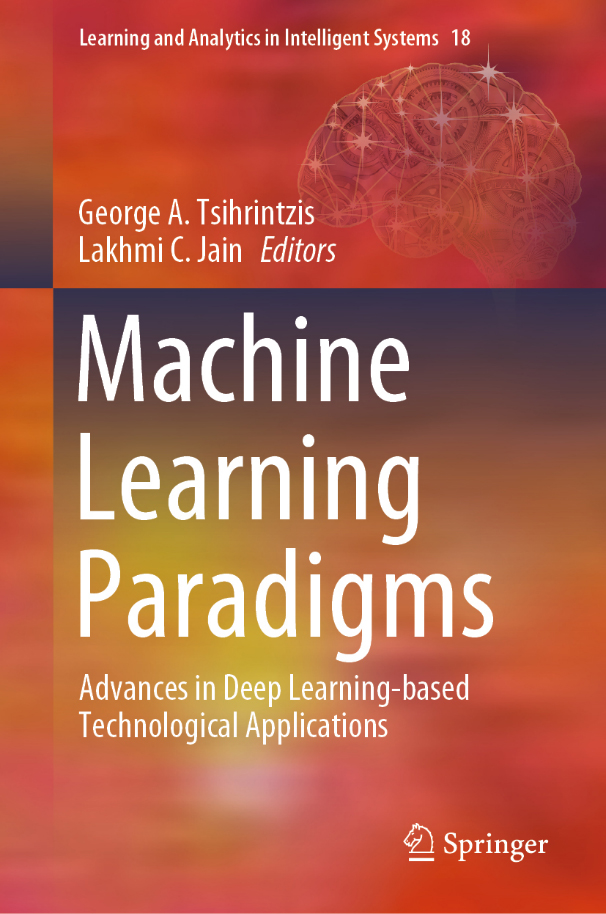Book Review

Machine Learning Paradigms
Advances in Deep Learning-based Technological Applications
Editors: Tsihrintzis, George A., Jain, Lakhmi C.
Springer 2020, pp 442, ISBN 978-3-030-49724-8
Vol. 18 in Springer Book Series entitled Learning and Analytics in Intelligent Systemshttps://www.springer. com/series/16172
Acting over the last three decades as an Editor and Associate Editor for a number of international journals in the general area of cybernetics and AI, as well as a Chair and Co-Chair of numerous conferences in this field, I have had the exciting opportunity to closely witness and to be actively engaged in the stimulating research area of machine learning and its important augmentation with deep learning techniques and technol-
ogies. From this extensive personal perspective of an active researcher, I consider the book “Machine Learning Paradigms: Advances in Deep Learning-based Technological Applications” a very important and truly outstanding contribution into the enhancement of our understanding of how deep learning can be applied in real life centred technologies and techniques within a number of important and truly diverse domains. These domains include medical, geospatial, social, economic, and food processing just to mention a few that are covered in this significant book. Its 16 chapters are all well presented, coherent, and well written. The presented applications are innovative and supported by scientifically rigorous research. I find it remarkable that the Editors were able to complete such a comprehensive compendium on deep learning challenges, advances and applications. With no hesitation, I recommend it as a “must read” reference for researchers, practitioners, and higher research degrees students who want to experience truly exciting deep dive into a full-fledged deep learning. Two renowned global class experts in the field edit the book, which for me is always the best indicator of the importance and quality of the content.
I would like to finish this brief review expanding a bit further on my personal viewpoint regarding the book. For any active researcher like myself, the most important advantage of the book is the fact that it leaves its reader with a heightened ability to think – in different ways – about developing, evaluating, and implementing deep learning-based techniques and technologies in real life environments.
Edward Szczerbicki
The University of Newcastle, Australia
and
The Gdansk University of Technology, Poland
E-mail: [email protected]




